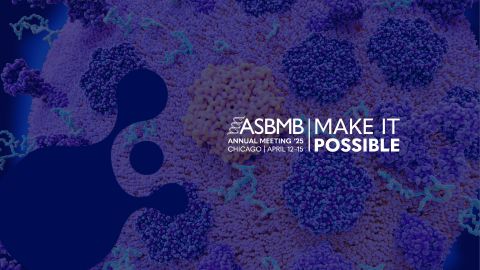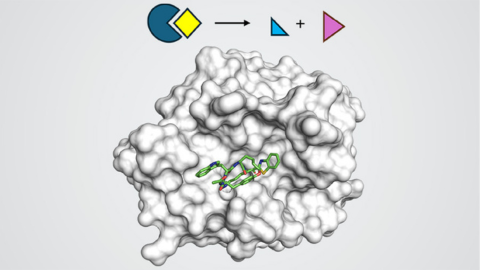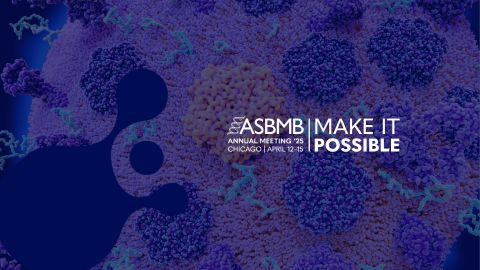Not for the faint hearted — but if you feel the calling...
In this time of continuing limited resources, most of us in the academic science community are straining to see a brighter horizon and hopefully even some upward funding foothills beyond the fiscal cliff and canyon of still uncertain size. If the tenured academic position was ever a guaranteed job for life (highly debatable), those days are long, long gone. Rather, someone considering a traditional academic research and teaching position had better have passion and a calling. If you do, and if you’re not faint of heart, what can you expect? Here’s a small collection of tips for those setting out on the exciting high-wire act.
Starting your research program
Essential to success in a new academic position is the development of an independent, substantial research program. This process has many moving parts, but it begins with the identification of important, unanswered questions in your field, the development of a well-formulated plan of attack to address the questions, and obtaining sound preliminary experiments to show feasibility of the plan. Usually this program will continue or branch from one of your completed research projects, but ideally it will benefit from the integration of perspectives derived from all your training experiences and result in a uniquely personal approach.
Managing your time and your human resources
Interaction with students is what draws many to an academic setting, so a commitment to teaching probably comes naturally. Teaching also provides an opportunity to identify trainees with whom you will enjoy mentoring and with whom you will enjoy working. Taking on a doctoral or even master’s degree student is a substantial commitment, and during the first year or two, your students will require more of your time and focus than you might expect (or remember!). But hopefully they will become independent and reward your effort with their own creativity and perspectives. Some graduate programs are now facilitating joint sponsorship of students, which may lessen the financial and time burdens. This also brings into focus the fact that one does not work alone, so being an astute human-resources manager is a useful trait as well. Attracting the best co-workers to your lab requires being a keen judge of capability and compatibility, conveying clear performance expectations and providing a rewarding work environment so colleagues at all levels share in the discovery process. When personal HR functions work well, it’s great! When they don’t, it can be a real drain. It often is worthwhile to have faculty colleagues interview prospective hires until your own lab can provide enough co-interviewer perspectives. Workshops to develop management skills, probably not part of the graduate curriculum, are also useful.
Keeping your research program going
Many young investigators report that getting a renewal for that first grant is even more difficult than getting it in the first place, as mechanisms supporting initial applicants don’t apply and productivity after only a few years may be modest. So getting a running start is important, along with perseverance. It’s also vital to temper the inclination to branch out with the awareness that keeping a primary program going while getting sufficient preliminary results to convince review panels to fund a second direction takes energy, time and often some luck.
Getting pulled in multiple directions
Most academic institutions strategically are developing interdisciplinary, collaborative research efforts to make the faculty sum greater than its component parts. Recruitment of interactive junior faculty members is often a tactic, and on stepping aboard, a new faculty member with unique experience may be sought to contribute to multiple research programs. This can be intellectually broadening, exciting and flattering – if it doesn’t materially dilute efforts toward the new faculty member’s own program. Should ongoing collaborations emerge, you should position yourself to become a recognized co-principal investigator on efforts (and grants!) and not a dependent associate whose contributions are hazy to the research community and to institutional promotion committees.
Asking for and accepting help
Formalized mentoring programs for junior faculty members are becoming widespread, sometimes leaving older faculty members bemused, as a random conversation at the bench or over coffee usually constituted mentoring when they were younger. Yet most of today’s new faculty members welcome active guidance, and both younger and older participants are reporting these programs to be rewarding. A new lab has myriad needs, many of which will become apparent in unexpected ways and will have difficult timeframes, so having a strong department chairperson on your side willing and able to make your case to higher administration is important.
Paying attention
It’s helpful to listen carefully for information you may not exactly want to hear but need to know. For example: Consider reaching out to review panel officers who can fill you in on the details of applications that failed to meet the funding bar, or examining teaching critiques that contain important feedback about your performance. Though doing so might make you uncomfortable initially, there are surely things to learn to make your next efforts go more smoothly.
Doing your community service
It’s also important and rewarding to be a good institutional citizen, perhaps through participation in curriculum development, graduate training, seminar planning or other committee work. Of course, if wrangling is a theme at your institution, it can distract you from your core efforts or, worse, have the same effect as seeing how sausage is made, as the saying goes.
In some ways, the junior faculty position is the ultimate meritocratic and entrepreneurial position for our business-focused times: a position with great independence of thought and few rigid limits to expansion when supported by truly creative thinking and execution, inner drive and an appropriate amount of self-promotion. Increasingly, a shrinking safety net makes the high-wire performance an intense experience. For many, it continues to be a fantastic experience to step into an empty lab and know that you can pretty much ask any scientific question that is important to you and have the unparalleled excitement of leading your own discovery team, perhaps in close collaboration with others, in a quest for answers that will benefit humanity.
Enjoy reading ASBMB Today?
Become a member to receive the print edition four times a year and the digital edition monthly.
Learn moreFeatured jobs
from the ASBMB career center
Get the latest from ASBMB Today
Enter your email address, and we’ll send you a weekly email with recent articles, interviews and more.
Latest in Careers
Careers highlights or most popular articles

Host vs. pathogen and the molecular arms race
Learn about the ASBMB 2025 symposium on host–pathogen interactions, to be held Sunday, April 13 at 1:50 p.m.

Richard Silverman to speak at ASBMB 2025
Richard Silverman and Melissa Moore are the featured speakers at the ASBMB annual meeting to be held April 12-15 in Chicago.

Women’s History Month: Educating and inspiring generations
Through early classroom experiences, undergraduate education and advanced research training, women leaders are shaping a more inclusive and supportive scientific community.

Upcoming opportunities
Register for the May 14 ASBMB Breakthroughs webinar on biosynthesis and regulation of plant phenolic compounds.

Upcoming opportunities
Save the date for ASBMB's virtual meeting on nucleophilic proteases. Reminder: Get your ticket for #ASBMB25's closing reception at the Griffin Museum of Science and Industry before it sells out!

Emerging Investigator Seminar: Networking, career insights & cutting-edge research
At ASBMB 2025, this all-day seminar will offer a chance to hear from budding scientists, build connections and learn about scientific career opportunities.

